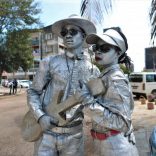Mozambique: Prison alone 'ineffective' at combating organised crime - top court | Watch
Covax promises over two million vaccine does for 142 countries, Mozambique included – AIM report

Picture: WHO
The Covax facility, operated by the World Health Organisation (WHO), announced on Tuesday the list of 142 countries, including Mozambique, that will receive 237 million doses of the AstraZeneca/Oxford vaccine against the Covid-19 respiratory disease between March and May.
The Covax document states that Mozambique will receive 2,064,000 doses. Since each person should take two doses of the vaccine, this should be enough to vaccinate fully over a million people.
Outside of the Covax initiative, Mozambique has already received 200,000 doses of the vaccine produced by the Chinese company Sinopharm. Those vaccines have now been flown from Maputo to all provincial capitals, and the vaccination is expected to begin on Monday.
The Mozambican government has asked Covax for enough vaccines to cover 20 per cent of the population (about 6.5 million people) by the end of 2022. The figure of 20 per cent includes children – but if children are excluded from the figures, then 6.5 million is around 40 per cent of the population to be vaccinated.
The Mozambican government’s vaccination plan has not yet been published, but a summary of it is circulating on the Internet. In the first phase of vaccination, the priority groups are all health professionals (including community health agents, and trainees in health training institutes), followed by people aged 70 and above, and people aged between 15 and 69 who are at high risk of serious illness or death because of such risk factors as high blood pressure, obesity, asthma, heart disease or chronic lung diseases.
The groups to be covered in the second phase of vaccination are people aged between 15 and 69 with conditions such as tuberculosis and HIV, which put them at high risk of death; everyone aged between 50 and 69; key workers outside the health sector (including teachers, police, soldiers, firemen, emergency response staff, and workers in old people’s homes and in prisons); vulnerable groups such as transport workers, market sellers, and internally displaced people.













Leave a Reply
Be the First to Comment!
You must be logged in to post a comment.
You must be logged in to post a comment.